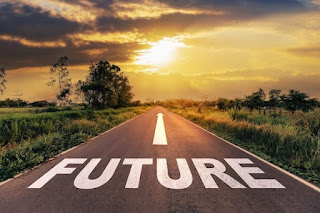Computer vision:Transforming image and video analysis with AI
In today’s digital age,
the fusion of computer vision and artificial intelligence is reshaping how we
perceive and interact with visual data. From facial recognition to autonomous
vehicles, the applications of computer vision are diverse and far-reaching,
promising to transform industries and enhance human experiences.
Unveiling the Magic of
Computer Vision:
Computer vision, a branch
of artificial intelligence, empowers machines to interpret and understand the
visual world. By mimicking human vision processes, computer vision algorithms
analyze and extract meaningful information from images and videos. This enables
machines to recognize objects, understand scenes, and even make decisions based
on visual inputs.
Traditionally, image and
video analysis relied on manual labor, often prone to errors and
inefficiencies. However, with the advent of computer vision and AI, the
landscape has undergone a paradigm shift. Tasks that once required human
intervention, such as object detection, segmentation, and tracking, can now be
automated with remarkable accuracy and speed.
Applications Across
Industries:
· Healthcare:
In the healthcare sector,
computer vision is revolutionizing medical imaging and diagnosis. From
detecting anomalies in X-rays and MRIs to assisting in surgical procedures,
AI-powered computer vision systems are enhancing the precision and efficiency
of healthcare professionals.
· Retail:
In retail, computer
vision enables personalized shopping experiences and efficient inventory
management. By analyzing customer behavior and preferences, retailers can offer
targeted recommendations and streamline their supply chain operations.
· Automotive:
The automotive industry
is leveraging computer vision for the development of autonomous vehicles.
Advanced driver assistance systems (ADAS) equipped with computer vision
algorithms can detect pedestrians, recognize traffic signs, and navigate
complex road environments, paving the way for safer and more efficient
transportation.
· Agriculture:
In agriculture, computer
vision is optimizing crop management and yield prediction. By analyzing aerial
imagery and satellite data, farmers can monitor crop health, detect pests and
diseases, and make data-driven decisions to maximize productivity.
Challenges and
Opportunities:
While the potential of
computer vision is immense, it also poses challenges related to privacy, bias,
and ethical considerations. Issues such as algorithmic bias and data privacy
must be addressed to ensure that computer vision technologies are deployed responsibly
and equitably.
However, despite these
challenges, the opportunities presented by computer vision are boundless. As
algorithms become more sophisticated and datasets more extensive, the
capabilities of computer vision will continue to expand, unlocking new
possibilities for innovation and discovery.
Conclusion:
In conclusion, computer
vision, powered by artificial intelligence, is transforming image and video
analysis in unprecedented ways. From enhancing healthcare and retail
experiences to revolutionizing transportation and agriculture, the impact of
computer vision is profound and far-reaching. As we navigate the opportunities
and challenges ahead, one thing is certain: the fusion of computer vision and
AI will continue to shape the future of technology and human society.




Comments
Post a Comment